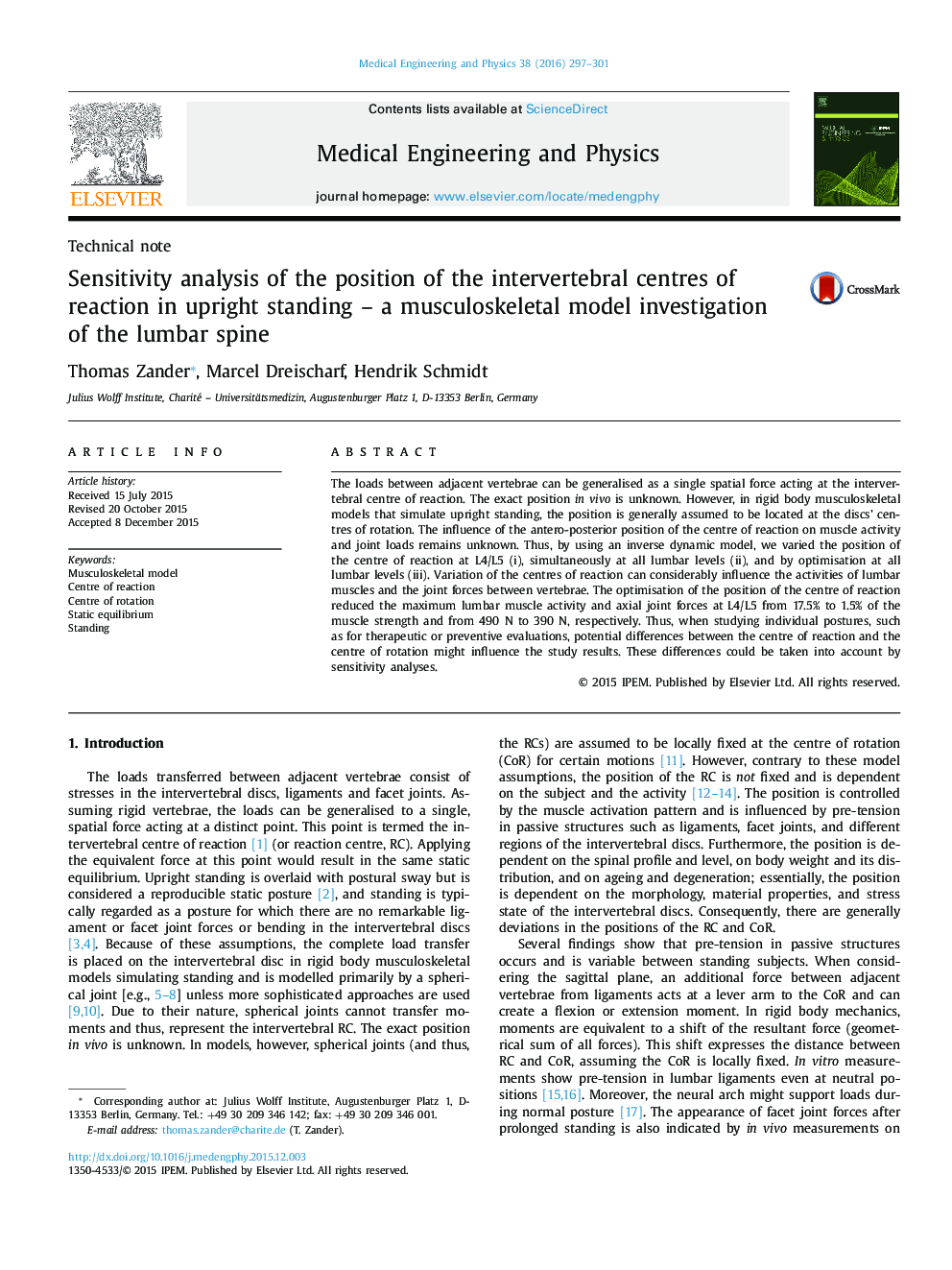| Article ID | Journal | Published Year | Pages | File Type |
|---|---|---|---|---|
| 875738 | Medical Engineering & Physics | 2016 | 5 Pages |
•The intervertebral kinematics of a musculoskeletal model was investigated.•The effect on joint and muscle loads during standing was determined.•Spinal loads are considerably influenced by the position of the centres of reaction.•Optimisation of disc kinematics might simulate the situation of fatigued muscles.
The loads between adjacent vertebrae can be generalised as a single spatial force acting at the intervertebral centre of reaction. The exact position in vivo is unknown. However, in rigid body musculoskeletal models that simulate upright standing, the position is generally assumed to be located at the discs’ centres of rotation. The influence of the antero-posterior position of the centre of reaction on muscle activity and joint loads remains unknown. Thus, by using an inverse dynamic model, we varied the position of the centre of reaction at L4/L5 (i), simultaneously at all lumbar levels (ii), and by optimisation at all lumbar levels (iii). Variation of the centres of reaction can considerably influence the activities of lumbar muscles and the joint forces between vertebrae. The optimisation of the position of the centre of reaction reduced the maximum lumbar muscle activity and axial joint forces at L4/L5 from 17.5% to 1.5% of the muscle strength and from 490 N to 390 N, respectively. Thus, when studying individual postures, such as for therapeutic or preventive evaluations, potential differences between the centre of reaction and the centre of rotation might influence the study results. These differences could be taken into account by sensitivity analyses.
